Selecting the perfect hairstyle can often feel like navigating a labyrinth of choices, but it doesn’t have to be a perplexing journey. When it comes to braids, you’ll likely encounter two prominent styles: knotless and knotted braids.
Each of these techniques boasts its own unique advantages, and the decision of which one to choose ultimately hinges on your individual preferences and needs.
Knotless braids, as the name implies, are meticulously crafted without any visible knots at their base. This technique not only yields a more natural and seamless appearance but also minimizes tension on your scalp. This gentle approach makes knotless braids an excellent choice, especially for those with sensitive skin or hair prone to breakage.
On the contrary, knotted braids adhere to the traditional method of securing hair with knots. This style offers added durability, capable of withstanding a range of activities, making it ideal for individuals leading active lives.
Intrigued by the possibilities but unsure which path to take? In this article, we will delve into the intricacies of knotless and knotted braids, dissecting their differences to empower you with the knowledge needed to make an informed choice.
Whether you’re driven by personal style preferences, hair type considerations, or a specific aesthetic vision, our exploration will illuminate the path towards the hairstyle that suits you best.
So, let’s embark on this journey of discovery and unravel the distinctions between knotless and knotted braids to guide you towards your ideal look.
What Are Knotless Braids
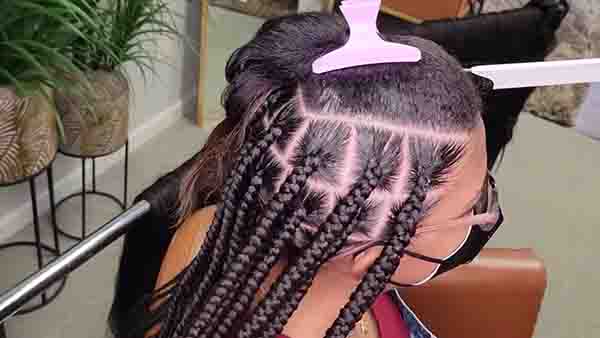
Knotless braids, also known as feed-in braids, are a popular alternative to traditional braids. These braids are created by weaving hair extensions into the natural hair without using knots. The extensions are added gradually, resulting in a more natural and seamless appearance.
One of the main advantages of knotless braids is that they put less tension on the scalp, reducing the risk of discomfort and hair breakage.
Additionally, knotless braids tend to last longer than traditional braids and are easier to style and maintain.
They also offer more versatility when it comes to parting and styling options. Overall, knotless braids provide a modern twist on a classic hairstyle that is both stylish and gentle on the hair.
What Are Knotted Braids
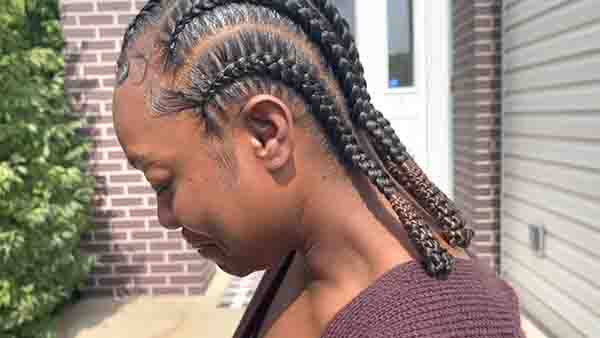
Knotted braids, also known as traditional braids, involve weaving the hair by creating individual knots. These braids are popular for their durability and ability to hold intricate styles.
However, there are some drawbacks to consider. With knotted braids, there is a higher risk of hair breakage due to the tension applied during the knotting process.
Additionally, the installation process can be time-consuming and tedious, requiring more expertise.
On the other hand, knotless braids are a newer technique where the hair is attached without any knots. This method reduces tension on the hair, resulting in less breakage and a more natural appearance.
It is also quicker to install and allows for more flexibility in styling. Ultimately, the choice between knotted and knotless braids depends on personal preference, hair type, and desired style.
Regular maintenance and proper care are crucial for maintaining the health of the hair, regardless of the chosen technique.
Comparing Knotless and Knotted Braids: Factors to Consider
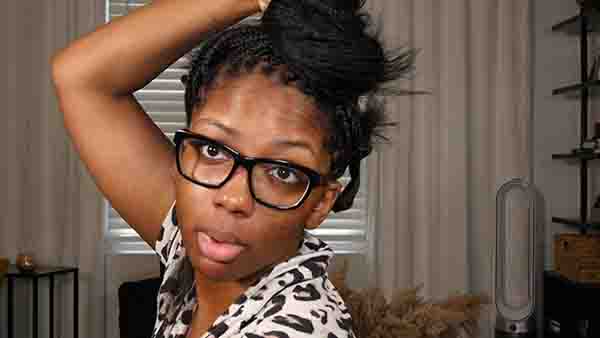
When deciding between knotless and knotted braids, several factors come into play. Here’s a comparison of the two methods to help you make an informed choice:
Knotless Braids
1. Knotless Braids Installation Process
Unlike traditional braids where your natural hair is divided into sections and a knot is created at the root, knotless braids start with your natural hair and a small braid is added using a feed-in method.
The hair extensions are gradually added to each braid, resulting in a seamless transition between your natural hair and the extensions. This technique avoids adding excessive tension to your scalp, making knotless braids a more comfortable and less damaging option compared to knotted braids.
2. Benefits of Knotless Braids
1. Natural and Lightweight Feel: Knotless braids offer a more natural look, as the absence of knots at the root eliminates the bulky appearance. The gradual addition of hair extensions ensures a lightweight and less restrictive feel.
2. Reduced Tension on Scalp: The feed-in method used in knotless braids reduces tension on the scalp, minimizing the risk of hair breakage and promoting healthier hair growth.
3. Versatility: Knotless braids are versatile, allowing for various styling options. They can be worn in a ponytail, updo, or any other desired hairstyle without the need to conceal visible knots.
4. Longer Lasting: Knotless braids have a longer lifespan compared to knotted braids. With proper care and maintenance, knotless braids can last up to eight weeks, saving you time and effort in frequent re-installations.
3. Popular Styles and Variations of Knotless Braids
- Waist-Length Box Braids: This classic style involves longer braids that graze the waist, offering a bold and striking look.
- Bohemian Locs: Inspired by natural dreadlocks, these textured and voluminous braids give the appearance of fully matured, free-form locs.
- Feed-In Braids with Curls: This style combines knotless braids with curly extensions, creating a unique and eye-catching look.
- Goddess Braids: These larger, intricate braids with detailed patterns are a popular choice for special occasions or a statement look.
- Lemonade Braids: Inspired by Beyoncé’s iconic braided hairstyle, lemonade braids involve tight and small knotless braids that flow down elegantly.
4. Cons of Knotless Braids
- Longer installation time.
- Higher cost compared to knotted braids.
- Greater care requirements for maintenance.
Knotted Braids: Timeless Elegance
1. Knotted Braids Installation Process
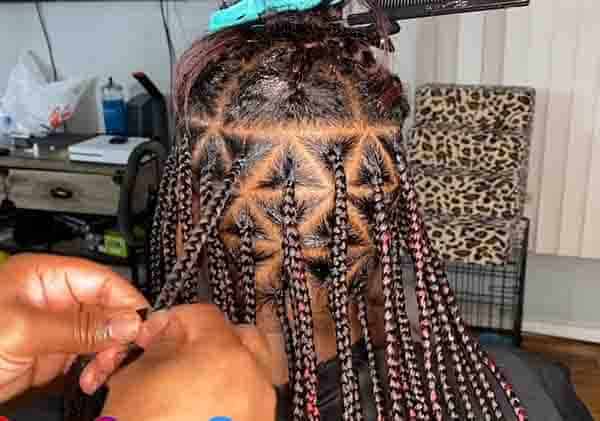
Installing knotted braids requires skill and precision, ensuring the knots are secure and long-lasting. Here’s a rundown of the installation process:
- Hair Preparation: Before braiding, the hair needs to be clean, moisturized, and detangled.
- Sectioning: The hair is sectioned into small parts, allowing for manageable braiding and creating intricate knots.
- Knotting Technique: Each section is divided into two strands, which are then crossed over each other using a twisting motion. This process is repeated until the desired length is achieved.
- Securing the Knots: Once the length is complete, the ends of the braids are secured with elastic bands or hair clips, ensuring the knots stay intact.
2. Benefits of Knotted Braids
1. Low Maintenance: Once installed, knotted braids require minimal upkeep, saving you time and effort in your daily routine.
2. Protective Style: Knotted braids provide protection for your natural hair, preventing breakage and promoting healthy hair growth.
3. Versatility: From sophisticated updos to casual loose braids, knotted braids can be styled in various ways, allowing for versatility and creativity.
4. Longevity: With proper care and maintenance, knotted braids can last for several weeks, giving you a long-lasting and convenient hairstyle.
3. Popular Styles and Variations of Knotted Braids
- Box Braids: This style involves creating small, square-shaped sections and knotting them from the root to the ends, providing a clean and uniform look.
- Senegalese Twists: With this variation, the sections are larger, and the twists are created with a two-strand twisting technique, resulting in a thicker and fuller braided look.
- Goddess Braids: These larger-sized braids are often styled in an updo, giving off an ethereal and goddess-like vibe.
- Cornrows: Cornrows are a classic knotted braid style where the hair is braided close to the scalp in straight lines or intricate patterns, offering a sleek and timeless appearance.
4. Cons of Knotted Braids
Cons
- Potentially greater scalp tension.
- Limited styling options due to visible knots.
- May feel heavier compared to knotless braids.
Choosing Between Knotless and Knotted Braids
1. Hair Type and Texture
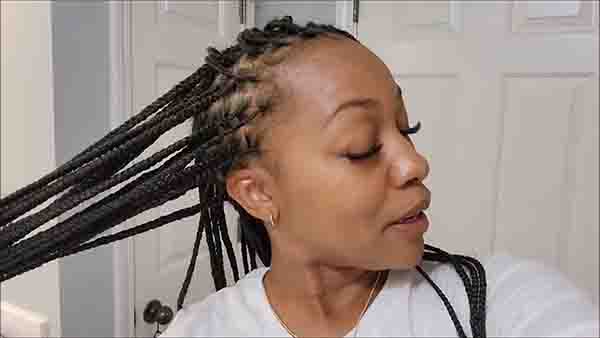
- Fine or thin hair: Knotless braids are gentle and reduce the risk of breakage.
- Thick or coarse hair: Knotted braids provide better hold and stability.
2. Styling Preferences and Versatility
- Knotless braids: Great for sleek updos and lightweight styles.
- Knotted braids: Offer more volume and flexibility for various styles.
3. Scalp Sensitivity and Health
- Knotless braids: Gentler on the scalp due to the absence of knots.
- Knotted braids: Proper installation and maintenance can minimize scalp discomfort.
4. Maintenance and Repair Needs
- Knotless braids: Easier to take down and may require fewer repairs.
- Knotted braids: Might experience more frizz and need occasional touch-ups.
FAQ
Knotless braids can often last longer than regular braids because they reduce tension and stress on the scalp, potentially causing less damage.
Braiding involves weaving strands of hair together to create a woven pattern, while knotting typically involves twisting or looping hair to secure it.
Knotted braids may or may not last longer than knotless braids, as their durability depends on factors like installation, care, and maintenance.
The duration of knot braids can vary based on factors like braid size, hair type, and maintenance. On average, they can last around 6 to 8 weeks.
Knotting hair refers to securing hair by twisting or looping it into knots or knots in a decorative or functional pattern.
The best braided knot depends on the desired style and purpose. Common braided knots include the square knot, figure-eight knot, and overhand knot.
Knotted braids involve securing sections of hair with knots. The specific technique can vary depending on the desired style, but it generally includes twisting and tying sections of hair.
Yes, you can tie knots with braided fishing line or other types of braided line. Different fishing knots are used depending on the application.
Knotless goddess braids are a protective hairstyle where extensions are added gradually, reducing tension and creating a natural, flowing look.
Knotless braids are typically less painful than box braids because they reduce tension at the base and are installed without knots.
Knotless braids can feel heavy depending on the thickness and length of the braids, but they are often lighter than traditional box braids.
Yes, knotless braids typically cause less tension on the scalp compared to traditional braids with knots. This reduced tension can be gentler on the hair and scalp.
Knotless braids can be done on various hair types, but having thicker hair can provide more versatility in terms of braid size and style.
Conclusion
Both knotless and knotted braids offer unique advantages and appeal to different preferences. Knotless braids provide a more natural look, with less tension on the scalp and a longer-lasting style. On the other hand, knotted braids offer a wider variety of styling options, with the ability to achieve intricate designs and unique patterns.
Ultimately, the choice between knotless and knotted braids depends on factors such as hair type, desired style, and personal preference. It is essential to consult a professional hairstylist who can assess your needs and guide you towards the best option for your hair.
So whether you opt for the seamless and natural look of knotless braids or the versatility and creativity of knotted braids, you can be confident that both styles can enhance your overall appearance and express your individuality. Embrace the beauty of braids and enjoy the endless possibilities they offer for transforming your hair.

